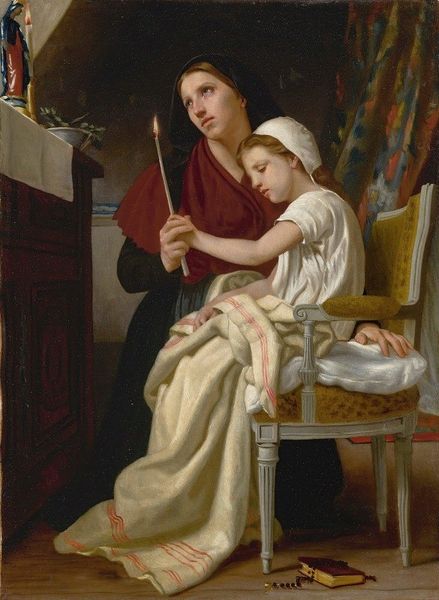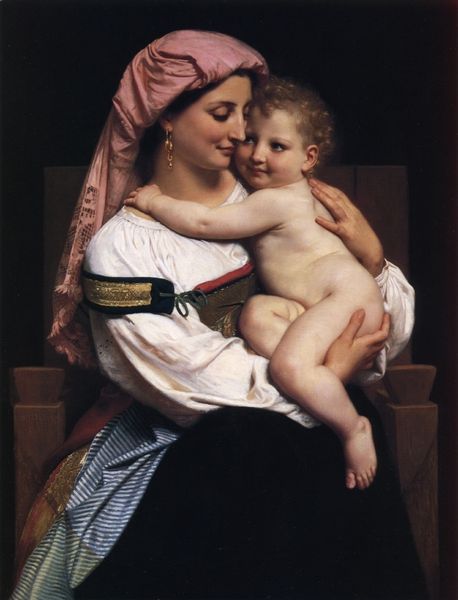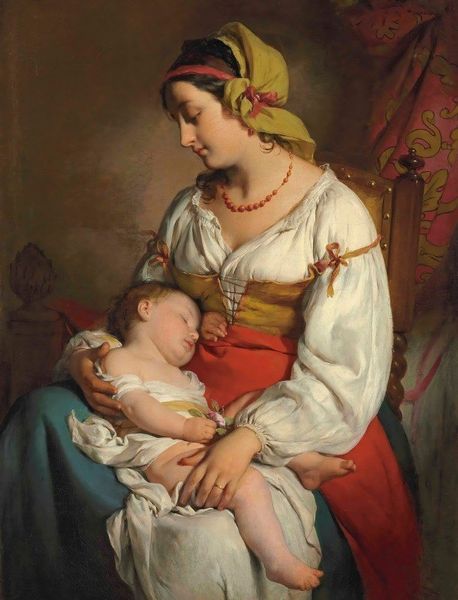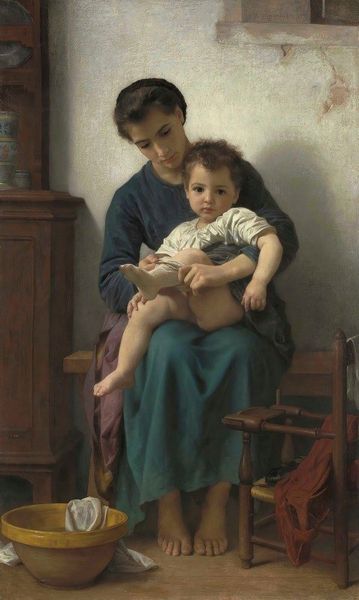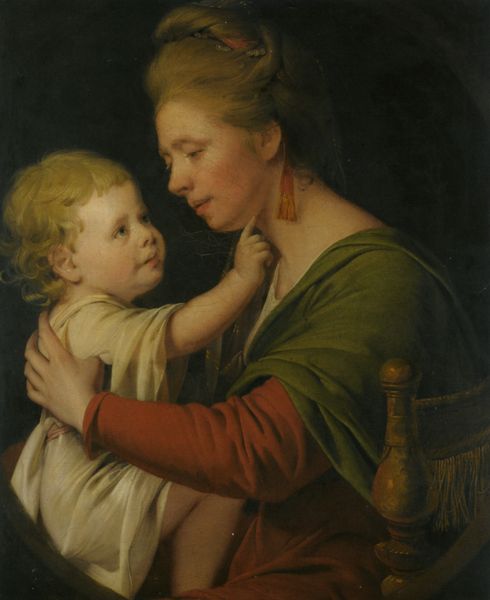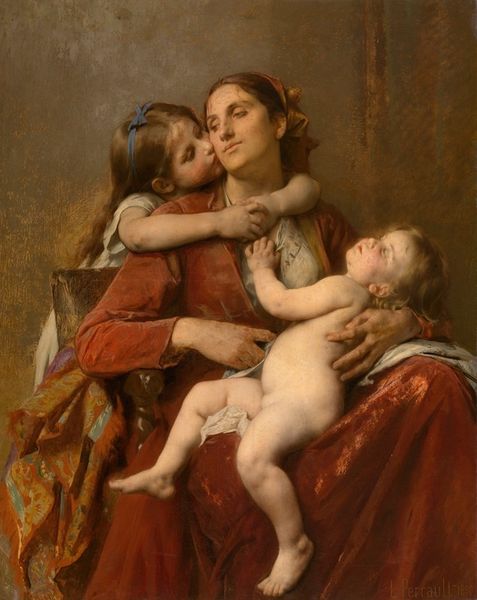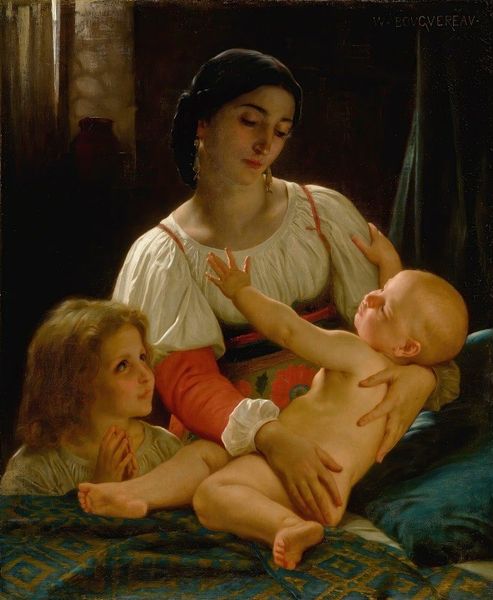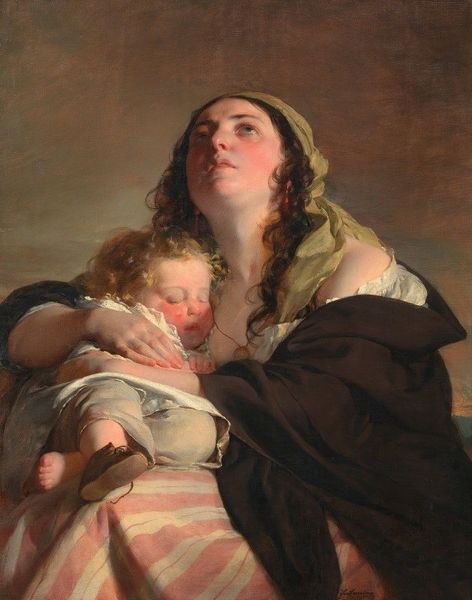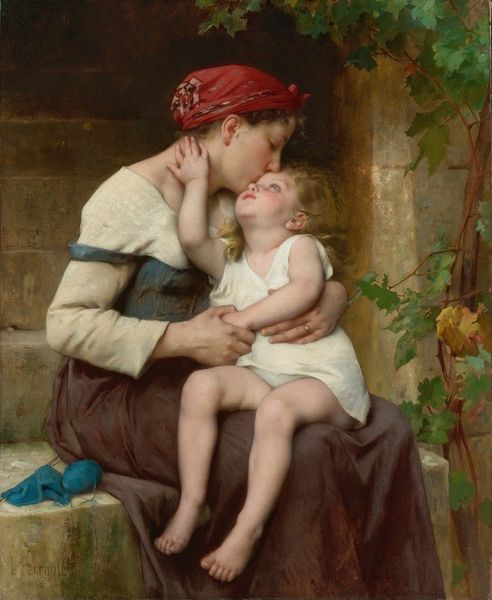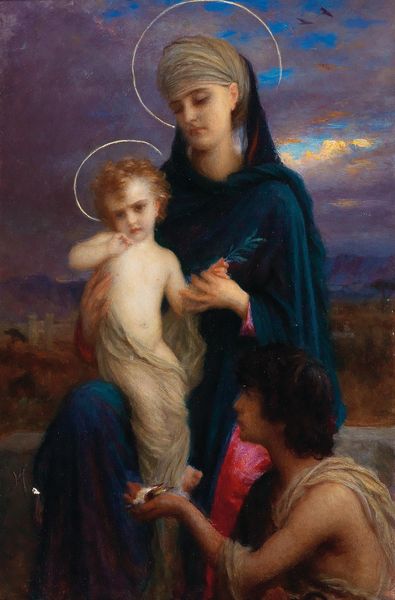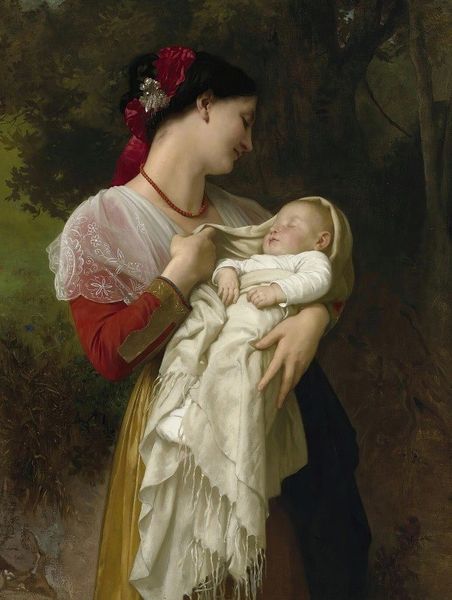
Dimensions: 108 x 147 cm
Copyright: Public domain
Curator: This is William Bouguereau's "The Thank Offering," painted in 1867. It's an oil on canvas, currently held in a private collection. Editor: Aaaah… the heavy quiet. It's a whisper of gratitude in a dim room. That candle flame – it feels like hope itself flickering. Curator: Indeed. Bouguereau was deeply embedded in the academic art tradition, yet he explored universal themes. This piece can be understood within the context of 19th-century French society, grappling with notions of piety, family, and gendered roles. We see here a young girl who is likely ill, accompanied by her mother perhaps. Editor: Right. Her little white cap tugs at my heart. She looks like an angel perched in that chair, swathed in the linen, while Mom holds the burning light. What strikes me is the starkness, even though Bouguereau was all about high finish. The shadows are looming... Curator: I find it fascinating to consider this through a feminist lens. The painting subtly reinforces the idealized, selfless image of women as caregivers and spiritual guides within the domestic sphere. Their role is active: to manage this delicate balance. Editor: I dig that take! Totally see the gentle, guiding hand... It makes me wonder, though, was she really grateful, that little girl? Or scared? Maybe she was hoping she'd be able to keep on running and playing like before, while everyone wants to shove virtue down her throat. Curator: That tension, between outward appearances and internal complexities, is crucial. Bouguereau’s works, while seemingly straightforward, engage in deeper dialogues about representation and societal expectations, revealing hidden struggles that particularly impact women and girls. We can interpret this as an exercise in feminine agency as a process for healing and making offerings of the self to the deity. Editor: The artist made it glow. The mother looks strong and weary. You just know they had each other’s backs… I'd really love to see them busting outta this painting and laughing somewhere, wild as anything. Curator: The piece resonates today as it forces us to grapple with themes that continue to challenge the status quo, revealing the silent revolutions carried out by women across historical narratives. Editor: So, for all of the sweet faces, the painting holds much sadness. Hope mingled with resignation, you know? Maybe all thanks offerings have a drop of melancholy in the mix. Curator: It reminds us of art’s capacity to prompt reflection, allowing us to bridge the gap between historical context and current discourse around gender, identity and the power of faith. Editor: To me, the beauty lives right where the dark is closest. I won't forget those faces anytime soon.
Comments
No comments
Be the first to comment and join the conversation on the ultimate creative platform.
